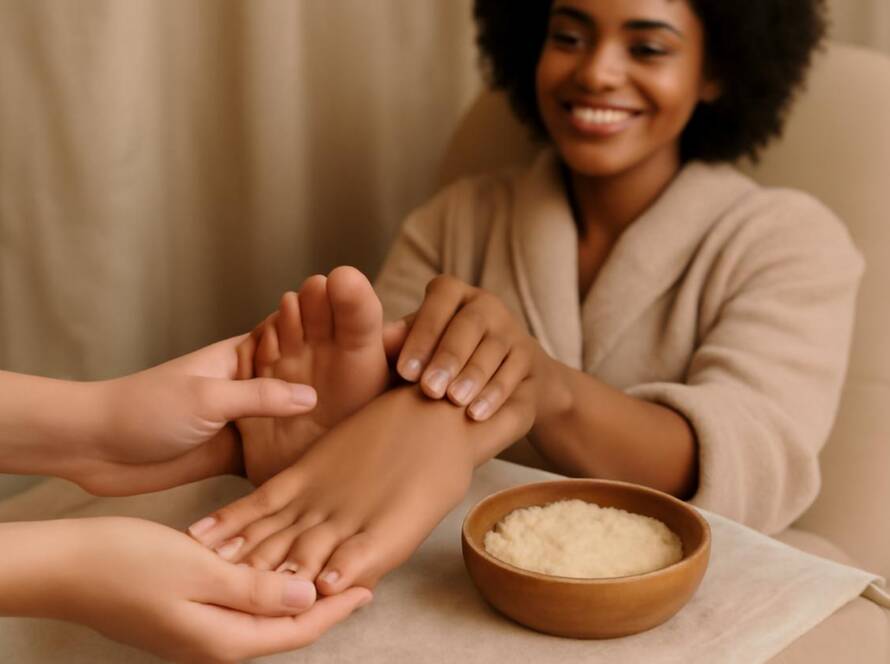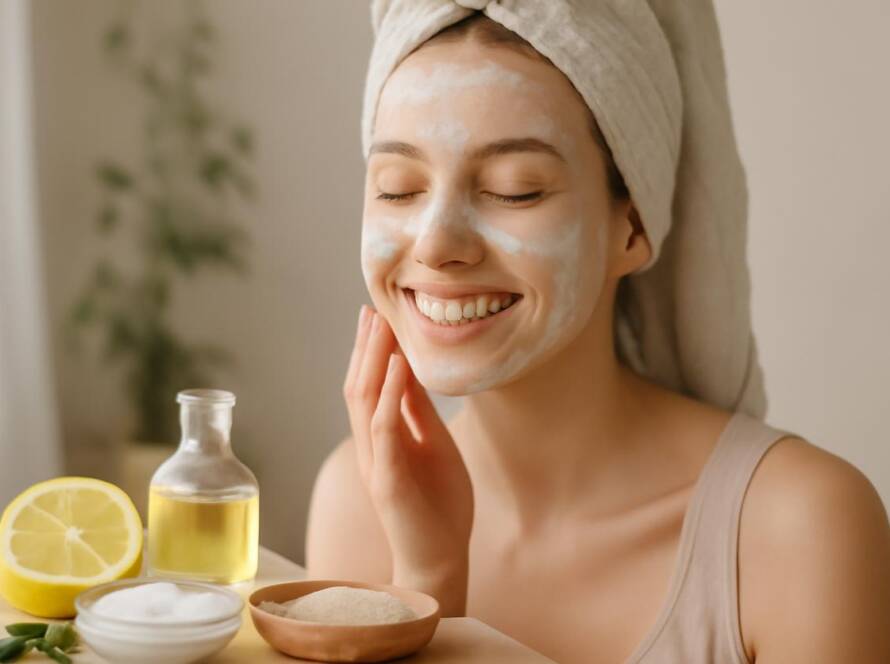Table of Contents
- Why regular pedicure care supports foot health
- Preparing for a safe at-home pedicure
- Step-by-step at-home pedicure routine
- Salon pedicures demystified: what to expect
- Common foot and nail issues and gentle remedies
- Long-term maintenance plan for healthier feet
- Natural ingredients and product suggestions
- Seasonal adjustments and special occasions
- Further resources and expert references
Why regular pedicure care supports foot health
Often viewed as a cosmetic indulgence, a pedicure is, at its core, a vital practice for maintaining foot health. Our feet bear the weight of our entire body, and neglecting them can lead to discomfort and more serious health issues. Regular pedicure care goes far beyond polished toenails; it is a fundamental aspect of personal hygiene and preventative healthcare.
Consistent foot care helps with the early detection of problems such as fungal infections, corns, and bunions. By regularly examining your feet during a pedicure, you can spot abnormalities before they become severe. Furthermore, the process of soaking, exfoliating, and moisturizing improves blood circulation in the feet, which is crucial for nutrient delivery and waste removal. This enhanced circulation can reduce pain and is particularly beneficial for individuals with sedentary lifestyles. A proper pedicure also helps prevent infections by cleaning the nails and skin, removing bacteria, and addressing issues like ingrown toenails before they require medical intervention.
Preparing for a safe at-home pedicure
Creating a safe and effective at-home pedicure experience begins with preparation. The foundation of a good pedicure is a clean environment and properly sanitized tools. Rushing this step can introduce bacteria and increase the risk of infection. Before you begin, choose a comfortable, well-lit area where you can easily reach your feet. Lay down a clean towel to protect surfaces and keep your supplies organized and within reach.
Tools and hygiene checklist
Having the right tools is essential, but ensuring they are clean is even more critical. Never share your pedicure tools with others to avoid cross-contamination. Before and after every use, sterilization is non-negotiable. You can clean your tools with soap and water and then sanitize them with a cotton ball soaked in at least 70% isopropyl alcohol.
- Nail Clippers: Choose a sturdy, sharp pair designed for toenails.
- Nail File or Emery Board: For smoothing and shaping nail edges.
- Pumice Stone or Foot File: For gently reducing calluses and rough skin.
- Cuticle Pusher: A wooden or rubber-tipped tool is gentler than metal.
- Foot Basin or Tub: Large enough to comfortably soak both feet.
- Towel: A clean, soft towel for drying.
- Foot Scrub: To exfoliate dead skin cells.
- Moisturizer or Foot Cream: To hydrate the skin after treatment.
- Cotton Pads and Rubbing Alcohol: For cleaning tools and nails.
Step-by-step at-home pedicure routine
Following a structured routine ensures you address every aspect of foot care, from skin-smoothing to proper nail maintenance. This methodical approach not only yields better results but also transforms the process into a relaxing ritual.
Soak and gentle exfoliation
The first step in any good pedicure is a warm foot soak. This not only cleanses the feet but also softens the skin, nails, and cuticles, making them easier to manage. Fill a basin with warm (not hot) water and consider adding Epsom salts to help soothe tired muscles and reduce inflammation. Soak your feet for 10-15 minutes.
After soaking, pat your feet dry and begin exfoliation. Apply a foot scrub in a circular motion, focusing on the heels and balls of your feet. For tougher, dry areas, use a pumice stone or foot file. Rub gently in one direction to avoid irritating the skin. The goal is to smooth the skin, not remove it entirely.
Nail trimming and mindful cuticle care
Proper nail trimming is one of the most important steps for preventing painful ingrown toenails. Using a clean toenail clipper, cut your nails straight across. Avoid cutting them too short or rounding the corners, as this encourages the nail to grow into the surrounding skin. After clipping, gently smooth any sharp edges with a nail file.
When it comes to cuticle care, less is more. The cuticle is a natural barrier that protects the nail matrix from bacteria. Instead of cutting them, apply a cuticle remover or oil and gently push them back with a wooden or rubber-tipped cuticle pusher. Cutting the cuticles can lead to irritation and infection.
Callus care without damage
Calluses are areas of thickened skin that develop in response to pressure and friction. While they can be unsightly, they serve a protective purpose. Aggressive removal, especially with razors or graters, can cause injury and lead to infection. The safest approach is gentle, consistent reduction. After soaking, use a pumice stone or foot file on damp skin, applying light pressure. Follow up with a thick, hydrating moisturizer to keep the skin soft and pliable. This gradual approach is far safer and more effective for long-term callus management.
Salon pedicures demystified: what to expect
For many, a professional pedicure is a treat that offers relaxation and expert care. A standard salon pedicure typically includes a foot soak, exfoliation, callus smoothing, nail clipping and shaping, cuticle care, a moisturizing massage, and the application of nail polish. However, the quality and safety of these services can vary significantly between salons.
A reputable salon will prioritize hygiene above all else. Look for clean workstations, technicians who wash their hands between clients, and evidence of proper tool sanitation. The gold standard for tool cleaning is a medical-grade sterilizer known as an autoclave, which uses steam under pressure to kill all microorganisms. If you don’t see one, don’t be afraid to ask about their sanitation process.
Questions to ask before a salon treatment
Advocating for your own health is crucial when visiting a salon. Before you settle into the chair for your next pedicure, consider asking these questions:
- How do you sanitize your tools? Look for answers that include an autoclave or hospital-grade disinfectant. Disposable tools like files and buffers should be new for each client.
- How are the foot baths cleaned? The tubs should be scrubbed and disinfected for at least 10 minutes between each client to prevent the spread of bacteria and fungi.
- Are your technicians licensed? Licensing ensures that the technicians have met state-mandated training and safety standards.
- Can I bring my own tools? If you are concerned about shared tools, most salons will accommodate this request.
Common foot and nail issues and gentle remedies
Regular pedicures can help manage and prevent common foot issues. If you notice any of these problems, address them with gentle care and consult a professional if they persist.
- Dry, Cracked Heels: This is often caused by a lack of moisture. Combat it by regularly exfoliating with a pumice stone and applying a thick, urea-based cream or petroleum jelly to your heels, especially before bed.
- Ingrown Toenails: Caused by improper trimming or tight footwear, this painful condition occurs when a nail corner grows into the skin. If it’s mild, you can try soaking the foot in warm, soapy water. However, if there is redness, swelling, or pus, see a podiatrist.
- Nail Fungus: This appears as yellowing, thickening, or crumbling of the nail. It thrives in damp environments. Keeping feet clean and dry is key for prevention. Over-the-counter treatments can help, but persistent cases require a doctor’s diagnosis and prescription.
Long-term maintenance plan for healthier feet
A single pedicure offers temporary benefits, but a long-term maintenance plan is the key to sustained foot health. Integrating simple habits into your routine can make a significant difference. A successful plan for 2025 and beyond should be consistent and adaptable.
A simple weekly and monthly schedule can keep your feet in top condition:
| Frequency | Task | Purpose |
|---|---|---|
| Daily | Wash and dry feet thoroughly. Apply moisturizer. | Prevents bacterial growth and keeps skin hydrated. |
| Weekly | Perform a mini at-home pedicure: soak, light exfoliation, and nail check. | Maintains skin softness and prevents nail issues. |
| Monthly | Complete a full at-home or professional pedicure. | Provides deep cleaning and addresses callus buildup. |
In addition to this schedule, always wear properly fitting shoes, avoid going barefoot in public wet areas like pools and gym showers, and give your nails a break from polish occasionally to allow them to breathe.
Natural ingredients and product suggestions
You don’t need expensive products to achieve a great pedicure. Many effective ingredients can be found in your own kitchen or local health food store. These natural alternatives are gentle and free from harsh chemicals.
- Epsom Salt: Ideal for foot soaks, it helps reduce swelling and soothe aching muscles.
- Tea Tree Oil: Known for its natural antifungal and antiseptic properties, adding a few drops to your foot soak can help keep infections at bay.
- Coconut Oil or Shea Butter: These are excellent natural moisturizers. Apply generously after your pedicure to lock in hydration and keep skin soft.
- Oatmeal: A ground oatmeal scrub can be a gentle exfoliant for sensitive skin.
Seasonal adjustments and special occasions
Your foot care needs can change with the seasons. In the winter, cold air and indoor heating can lead to extremely dry skin and cracked heels. Increase moisturizing efforts and consider wearing cotton socks to bed after applying a thick cream. In the summer, your feet are more exposed. Remember to apply sunscreen to the tops of your feet to prevent sunburn. Increased sweating can also create a breeding ground for fungus, so be diligent about keeping your feet dry.
Before a vacation or special event, plan your pedicure a day or two in advance. This allows polish to fully cure and lets any minor irritation from exfoliation or cuticle care subside. If you’re heading to a beach destination, a professional pedicure can ensure your feet look their best, but remember to continue your own hygiene and moisturizing practices while away.
Further resources and expert references
For more detailed information on foot and nail health, it is always best to consult trusted medical and public health sources. These organizations provide evidence-based guidance to help you make informed decisions about your care.
- Centers for Disease Control and Prevention (CDC): Offers guidelines on salon safety and infection control. Explore their resources on pedicure safety.
- National Institute of Arthritis and Musculoskeletal and Skin Diseases (NIAMS): Provides comprehensive information on overall foot health. Read their foot care tips.
- National Institutes of Health (NIH): A leading source for medical research and information, including nail health. Refer to their nail care guidance.
By treating a pedicure as an essential part of your health routine, you invest in your comfort, mobility, and overall well-being for years to come.



